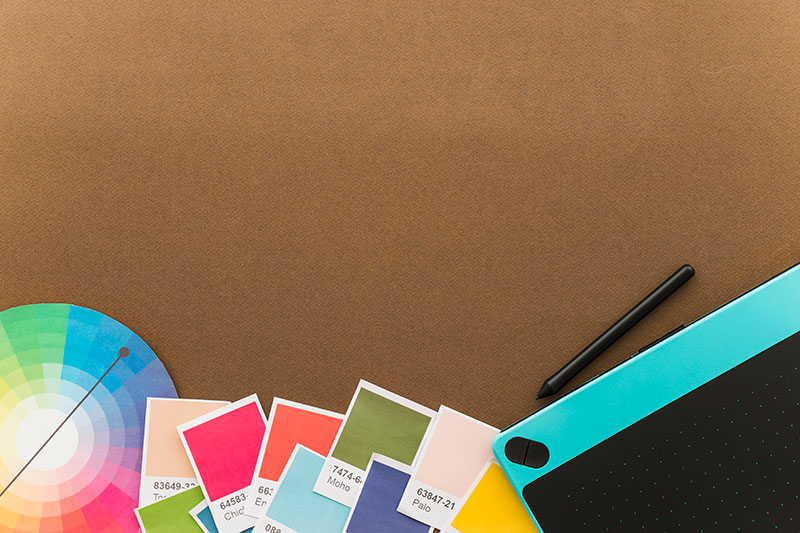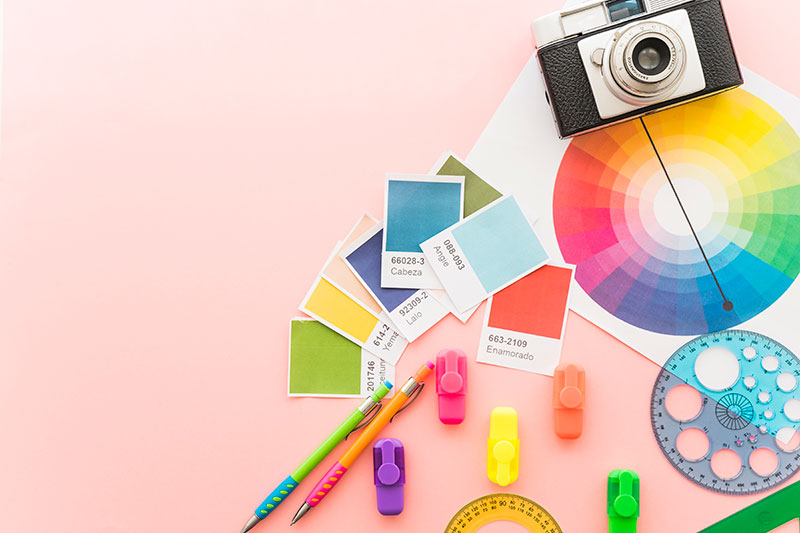Choosing colors to represent your organization is a tall order. You want to choose colors that you love, that your clients are drawn to, that speak to who you are as a company, that evoke the right emotional response.
Whether we realize it or not, colors tell a story, which is why it’s important to choose colors that tell the tale you want your audience to hear.
Color psychology is the topic of much conversation. We all have opinions on color that are influenced by our personal experiences. This is why it can seem so hard to choose colors that represent your brand.
We want to create marketing content and materials that exemplify you. That’s why we’re taking a look at color perceptions and how they influence your branding.
Color and Branding
In a study entitled “Impact of Color in Marketing,” researchers discovered that consumers make 90 percent of their snap judgments about a product based on color alone.
At the same time, it’s important to note that studies reveal that it’s much more important to pick a color that supports the personality you want to portray, not just a symbol of the product itself.
Think of it this way: Brown might work perfectly for a rugged brand (think leather, dirt, the outdoors) but it can also create a feeling of warm welcome (like Thanksgiving) or whet your appetite (chocolate). Likewise, white can symbolize purity, but Apple makes great use of the color to exemplify its focus on streamlined design.
What does this mean when we’re selecting colors? There’s psychology behind the colors we choose in branding, but more importantly, you need to decide what the colors you choose say about the story you want to tell.

Thoughts on the stereotypical meaning of colors
Whether we like it or not, there are some preconceived ideas about what certain colors represent to some consumers:
- Black is frequently described as being powerful, sexy or mysterious, which is probably why it’s used so often for luxury vehicle brands.
- Red is often used in branding to be energizing and attention-getting. It can be used to project power, confidence, excitement or action.
- Blue is known by some for being a stable, calming presence. It may convey feelings of trustworthiness and dependability.
- Yellow is generally accepted as a joyful, happy color. Some even associate the color with taking risks.
But here’s the thing. It’s not a scientific formula. If you want to evoke feelings of joy, should you choose yellow and be done with it?
Think again. Colors have all kinds of positive and negative connotations for everyone based on who they are, what their personal experiences are like, their culture, their age, their geography and their gender identity. Green for some can be calming and peaceful, but for others, it can symbolize jealousy.

Color and your unique brand
So if branding your organization isn’t about finding a color stereotype to represent a cookie-cutter mood, how do you choose colors?
Here’s the secret:
Choose colors that ring true to who you are, and you will attract like-minded customers.
No one else can do the things that you do. And you want to appeal to the people who will love what you do. Chances are, they’re a lot like you.
Our hot take on “the science of color” is more about the power of attraction. Choose colors that will excite and attract your ideal customers.
Our next hot take? You’re our ideal customer! Selecting colors can be challenging. We’re here to talk through each step of your graphic design and marketing journey so you end up with a final product that epitomizes you.
Have any questions? You can always contact us!







